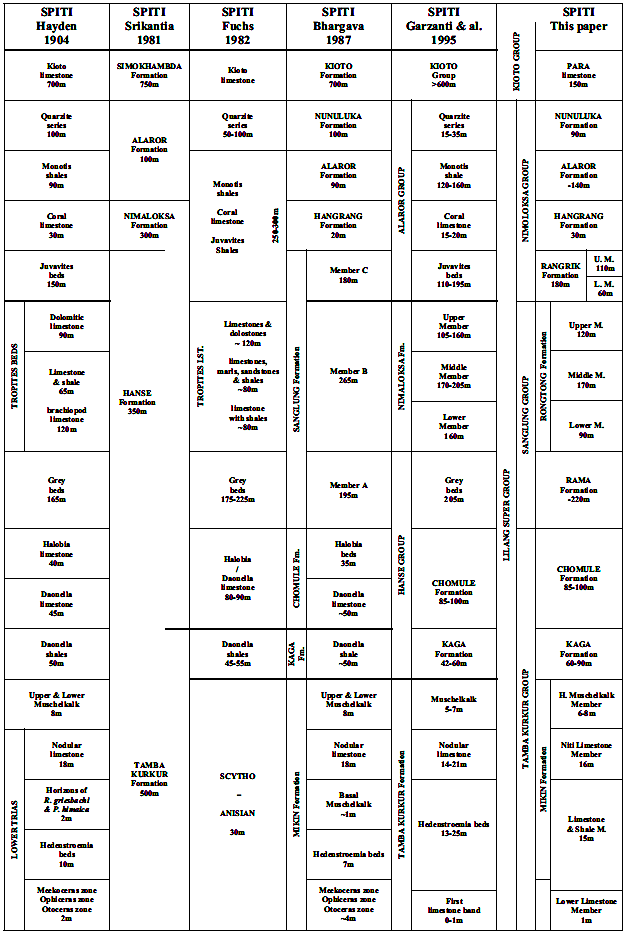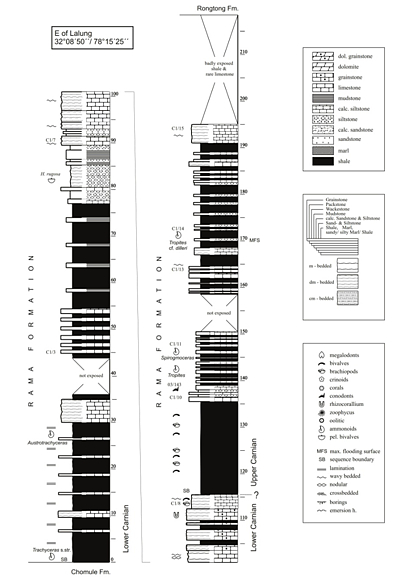Rama Fm
Type Locality and Naming
Type section is in the Lingti brook, East of Lalung. [Original Publication: Bhargava, O.N., Krystyn, L., Balini. M., Lein, R. and Nicora, A. 2004. Revised Litho- and Sequence Stratigraphy of the Spiti Triassic. Albertiana (Supplement), 30: p. 21-38.]
Synonyms: Sanglung B (Bhargava, 1987); Upper part of Sanglung Gr. It equals the classic Grey Beds
[Figure: Zanskar-Spiti-Kumaun region location (provided by Om Bhargava)]
[Figure 0: History of Triassic lithostratigraphic nomenclature of Spiti (after Bhargava et al., 2004)]
Lithology and Thickness
Siltstone to Limestone. Gray, locally carbonaceous fine-grained siltstone and limestone repeated in cyclic order. 220 m.
[Figure 1: Stratigraphic log of the Rama Formation, east of Lalung village in Spiti (after Bhargava et al., 2004)]
Relationships and Distribution
Lower contact
Lower contact with the Chomule Fm is conformable.
Upper contact
Gradational contact with the overlying Rongtong Fm.
Regional extent
Zanskar-Spiti and Himachal Pradesh to Kumaun-Garhwal region of Northwest Tethyan Himalaya
GeoJSON
Fossils
Trachyceras aff. ariae, Joannites cf. cybiformis, Monophyllites cf. simonyi, Rhynchonella laucana, R. himiaca, Spiriferina shalshalensis, Dielasma julicum, Lilangina nobilis, and Pomarangina haydeni
Age
Depositional setting
Shallow subtidal shelf to deeper neritic basin below wave base during ephemeral transgressive phases (Bhargava, 2008).
Additional Information
It equals the classic Grey Beds.


